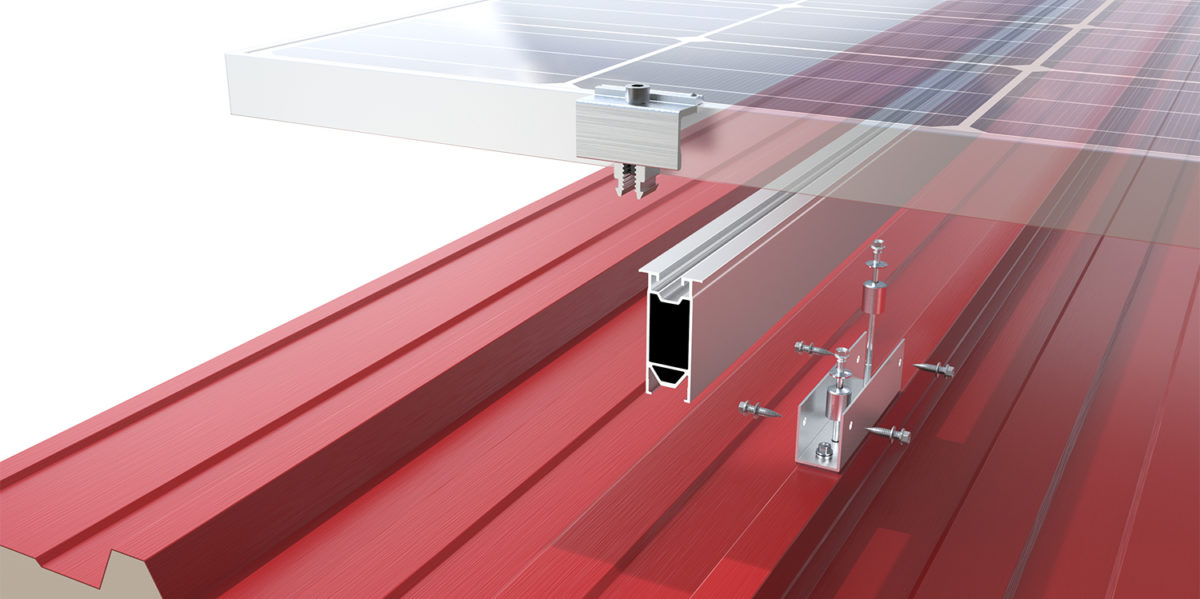From pv magazine International
Austrian mounting system provider Aerocompact has unveiled a new mounting system based on a 5.8m long support rail that does not lie on the roof but is connected directly to a purlin placed below with self-drilling support screws. In this way, the manufacturer said, the panels are neither stressed nor damaged, as all compressive and tensile forces from wind or snow are directed into the roof substructure.
The roof substructure is screwed with thin sheet metal screws directly onto the top layer of the panels. Spacer sleeves and additional supports guarantee that the distance between the rail and the roof is maintained evenly and that good ventilation is ensured. A pre-assembled rubber seal prevents moisture from entering the raised beads. A patented structural algorithm regulates the optimal distribution of the support points on the roof, in the Aerocompact planning software.
“As a rule, photovoltaic systems are mounted directly on the roof skin with self-tapping screws, so that compressive and tensile forces act on the panels and damage them,” explains Marco Rusch, group head of corporate communications at Aerocompact. “With our concept, damages are almost impossible.”
The company specified there is no need for any approvals or additional certificates from the manufacturer for the installation, which makes retrofitting photovoltaic systems significantly easier. The mounting system may also be installed on a rooftop system with different types of solar modules. “Because the roof substructure absorbs all the forces, it is irrelevant which panels were installed and which forces they can withstand,” explains Rusch.
Aerocompact has integrated a fastening solution which is suitable for wood, steel and aluminum purlins, into the in-house planning tool Aerotool, and project planners will find automated faetures for optimal load distribution. The mounting system comes with a 25-year guarantee.
Authored by RALPH DIERMANN
This content is protected by copyright and may not be reused. If you want to cooperate with us and would like to reuse some of our content, please contact: editors@pv-magazine.com.








By submitting this form you agree to pv magazine using your data for the purposes of publishing your comment.
Your personal data will only be disclosed or otherwise transmitted to third parties for the purposes of spam filtering or if this is necessary for technical maintenance of the website. Any other transfer to third parties will not take place unless this is justified on the basis of applicable data protection regulations or if pv magazine is legally obliged to do so.
You may revoke this consent at any time with effect for the future, in which case your personal data will be deleted immediately. Otherwise, your data will be deleted if pv magazine has processed your request or the purpose of data storage is fulfilled.
Further information on data privacy can be found in our Data Protection Policy.